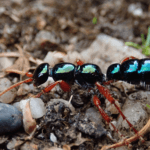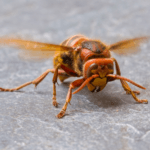
Delving into the World of European Wasps: A Compendium of Knowledge
European wasps, also known as German wasps or yellow jackets, are social insects that belong to the genus Vespula. These wasps are native to Europe, Northern Africa, and temperate Asia, but have been introduced to other parts of the world, including Australia, New Zealand, and North America.
Distinguishing Features and Habitat Preferences
European wasps are characterized by their distinctive black and yellow coloration, with a prominent black band across the abdomen. They are slightly smaller than common wasps, typically measuring around 13 to 20 millimeters in length.
These wasps are opportunistic feeders, and their diet consists of a variety of insects, fruits, and sugary substances. They are often found scavenging for food around human dwellings, picnics, and outdoor dining areas.
European wasps prefer to build their nests in sheltered locations, such as under eaves, in attics, or in hollow trees. Their nests are constructed from paper-like material made from chewed wood fibers mixed with saliva.
Social Structure and Stinging Behavior
European wasps exhibit a social structure similar to that of bees and ants. Within a colony, there is a distinct hierarchy, with a single queen responsible for reproduction and a large number of worker wasps tasked with nest maintenance, foraging for food, and caring for the larvae.
While European wasps generally pose no significant threat to humans, they can become aggressive if provoked or feel their nest is threatened. They have a painful sting that can cause discomfort, redness, and swelling. In rare cases, individuals with severe allergies to wasp stings may experience anaphylactic shock.
Preventing Nest Construction and Seeking Professional Help
To prevent European wasps from building nests on your property, it is essential to eliminate potential food sources and eliminate entry points around your home. This includes keeping food and garbage securely sealed, regularly cleaning up spills, and repairing any cracks or holes in exterior walls and foundations.
If you encounter a European wasp nest on your property, it is advisable to avoid disturbing it and contact a professional pest control service for assistance. These experienced technicians have the expertise and specialized equipment to safely remove the nest and prevent future infestations.
Our Pest Control Services: A Commitment to Safety and Environmental Responsibility
At our pest control company, we understand the concerns associated with European wasp infestations and are dedicated to providing safe, effective, and environmentally responsible solutions. Our experienced technicians are thoroughly trained in identifying and handling wasp nests, utilizing only EPA-approved products and techniques to safeguard the health and well-being of our customers, their families, and their pets.
We recognize the importance of maintaining a balance between pest control and environmental protection. Our approach strives to minimize the impact on the ecosystem while effectively addressing pest concerns. Our goal is to help you create a harmonious coexistence with the natural world, free from the nuisance and potential hazards posed by European wasps.
If you are concerned about European wasps or other pests in your home or business, please contact us for a free consultation. We will be happy to provide you with information about our comprehensive pest control services and answer any questions you may have.










